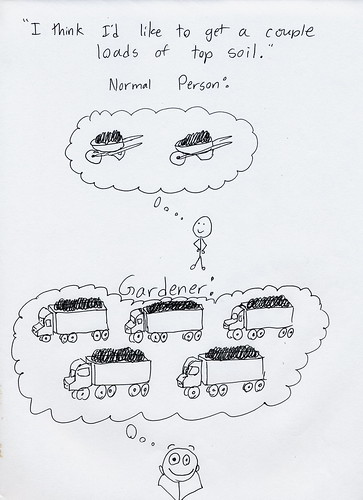I've been reading about invasive plants. In my post about purple loosestrife, I promised more about invasive plants which actually have been shown to have significant negative effects on native species.
Easier said than done.
I though I had hit what I was looking for when I found a paper titled
Ecology and ecosystem impacts of common buckthorn (Rhamnus cathartica): a review The paper starts elucidating why it is so successful: Shade tolerance, rapid growth, high photosynthetic rates, etc etc. Sounds great. But when it gets to showing how it hurts native plants, it all sort of falls apart – even though the authors clearly WANT common buckthorn to be a bad guy. Allow me to quote:
“Although the surveys and removal experiements do not definitively implicate R. catharica in the decline of native species, and the controlled experiments under individual R. cathartica threes did not show detrimental effects on understory plants, it is quite likely that R. cathartica thickets have negative effects on native species in North America.”
Which I translate as:
“All the evidence shows it really isn't a problem, but we bet it is bad anyhow. Just because.”
I could keep plowing through other species, but I decided to get a bird's eye view of the issues of non-native species, so I read the book
Invasion Biology by Mark A Davis (Not to be confused with another -- much less reputable -- book by the same title by David Theodoropoulos). It's aimed at a professional academic audience (professors, grad students) but is very readable, and pretty interesting.
Basically, they say that there is good evidence of serious damage caused to native species by non-native predators and diseases – eg: emerald ash borer, dutch elm disease – especially on islands and small lakes, which ecosystems tend to be more fragile. But most non-native
plant species are off the hook (which makes the practice of introducing new non-native predator insects to control non-native plants even more suspicious... let's import something very likely to be a problem to control something which most likely isn't a problem!)
There are plant species which cause significant damage -- not by out-competing native species, but by changing the environment. The best example (actually the only example I've been able to track down so far) are the European grasses in the genus
Bromus which changing parts of the Western US. They are much more flammable than native species so areas they have invaded burn more frequently, causing enormous impacts on the entire ecosystem. So some non-native species are bad. Some non-native plants are bad. But my impression from all the reading I've been doing is that in most cases, people have simply seen a non-native species outside of cultivation and ASSUMED it must be doing damage even though indepth studies rarely support that assumption.
So... as a gardener and someone who cares about the environment, what do I do with this? First, I'm certainly not going to support organizations that spend large amounts of time and money trying to eradicate invasive species unless they have very good evidence that it is actually worth it. Pollution, urban sprawl, and global warming are issues I'd much rather spend time and money fighting against. And in my garden? I'll still avoid planting species with the potential to invade natural areas – no one is arguing that invasive species are a GOOD thing – but honestly (and I know this is going to make people mad...), I'm not going to make it the priority I used to. It looks like the carbon dioxide my car emits driving to the nursery to buy the
Iris pseudacorus is way more damaging than the presence of that non-native species in my garden.
















